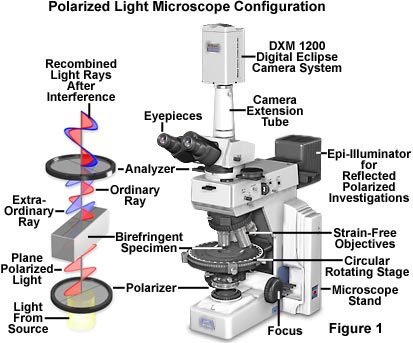Introduction to Light Microscopy
6/3/2014
JoVE Science Education Database. General Laboratory Techniques. Introduction to Light Microscopy. Journal of Visualized Experiments, Cambridge, MA, doi: 10.3791/5041 (2014).
The light microscope is an instrument used by researchers in many different fields to magnify specimens to as much as a thousand times their original size. In its simplest form, it is composed of a clear lens that magnifies the sample and a light source to illuminate it. However, most light microscopes are much more complex and house numerous fine-tuned lenses with tightly controlled dimensions all within the body of the microscope itself and in components such as the objectives and eyepieces. In this video, the major components of the light microscope are described and their uses and functions are explained in detail. The basic principles of magnification, focus, and resolution are also introduced. Basic light microscope operation begins with bringing light to the sample and ensuring that the light source is of the correct intensity, directionality, and shape in order to produce the best quality image. Next, the sample must be magnified properly and brought into focus to view the region of interest. There are many practical applications for light microscopy including the viewing of stained or unstained cells and tissues, resolving small details of specimens, and even magnifying a region of interest during surgery to assist with complex procedures on the micron scale.






